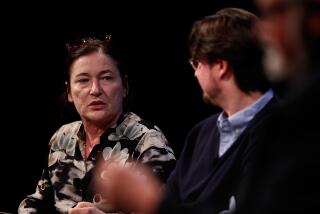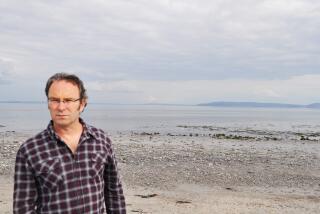Carl Phillips’ ‘The Art of Daring’ celebrates literature as risk
I spent part of my weekend reading Carl Phillips’ provocative and fascinating “The Art of Daring: Risk, Restlessness, Imagination” (Graywolf: 142 pp., $12 paper), which comes out this week. Ostensibly a poetry style book -- it’s the 10th volume in Graywolf’s “Art of” series -- it’s really more a writer’s (and a reader’s) manifesto, a testament to the importance of taking risks.
I haven’t read all that much of Phillips’ poetry -- might as well admit that here. But I’ll be going back to it now, not just because of the power of a poem such as “Beautiful Dreamer,” which he includes in these pages, but also because of the acuity of his sensibility, his idea that, in writing, what we are looking for is less closure than a kind of uncertainty.
“It’s often assumed that a resistance to closure is a post-modern development,” Phillips tells us, “but I hope I’m making clear that any successful poem -- one that is true to human experience -- will resist closure. To be resonant is to resist absolute closure.”
Yes, and not only in poetry. This may be the most vivid aspect of “The Art of Daring,” that so many of its points, its arguments, cross the blurry lines of genre to situate themselves at the center of why we read and write.
When Phillips writes about risk, he’s not writing (necessarily) about recklessness -- although a little recklessness, he acknowledges, can go a long way. “I don’t believe in taking risks,” he observes, “in order to write, and yet a risk-taking sensibility -- if it is a risk to plumb questions that most people avoid trying to answer -- has had everything to do with what I write about and how I write about it.”
The same, of course, could (or should) be said of any writer who’s worth reading -- a point Phillips makes explicit throughout the book. He invokes poets from Shakespeare to W.S. Merwin by way of highlighting the interplay of form and function, while also arguing for a certain un-knowing as the root of writing, a way to engage with our material as a revelatory act.
“Maybe daring,” he suggests, “is akin to an abandoning of the self to something not entirely knowable. In that regard, it’s a bit like faith.”
Or this: “What’s useful for me to consider now -- to remember -- is that I had no intention of being daring. Is it daring, then, if we’re simply doing, acting, speaking as we would anyway?”
That, I think, is the key point, the one that leads to authenticity. Writing -- writing that matters, anyway -- is always daring because the writer puts him or herself on the line. We write not to trace a position so much as to record an experience, or the experience of an experience, which is an inherently subjective and elusive thing. What happens when we come right up against our preconceptions, when what we are writing contradicts what we previously thought we understood about the world?
For Phillips, this is the point entirely, the moment artifice reveals itself as art. “[W]ithout the constant abandoning of one hunger for a new one, the desire to keep moving into discovery,” he insists, “how can a writer ever grow, either by deepening or by broadening his or her terms and terrain of inquiry?”
Twitter: @davidulin
More to Read
Sign up for our Book Club newsletter
Get the latest news, events and more from the Los Angeles Times Book Club, and help us get L.A. reading and talking.
You may occasionally receive promotional content from the Los Angeles Times.







